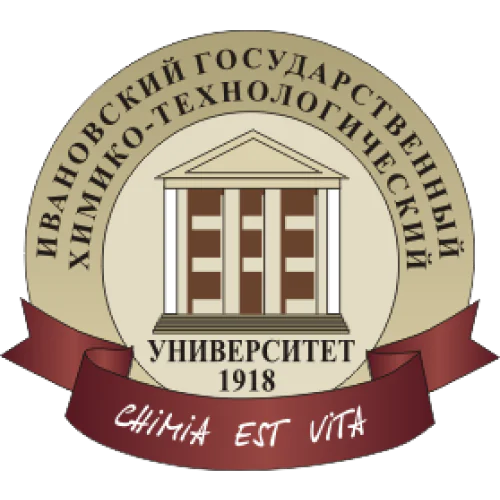Separation and Purification Technology, volume 269, pages 118716
Magnetic separation of water suspensions containing TiO2 photocatalytic nanoparticles
Bahtejeva Irina
1
,
MEDVEDEVA I.V.
1, 2
,
Zhakov S V
1
,
Byzov I V
1
,
Filinkova M S
1
,
Uimin M.A.
1, 3
,
Murzakaev A.M.
3, 4
Publication type: Journal Article
Publication date: 2021-08-01
Quartile SCImago
Q1
Quartile WOS
Q1
Impact factor: 8.6
ISSN: 13835866, 18733794
Analytical Chemistry
Filtration and Separation
Abstract
• TiO 2 nanoparticles were separated from water by magnetically seeded filtration and sedimentation. • Heteroaggregation of the TiO 2 nanoparticles and the magnetic Fe-C-COOH nanoseeds is a key factor. • The magnetic separation is tuned by changing pH and the particle concentration in water. • Magnetic filtration is a more effective process than magnetic sedimentation. The dynamics of magnetic separation of TiO 2 nanoparticles (25 nm) from water by adding composite magnetic Fe-C-COOH nanoparticles (15 nm) and subsequent magnetic sedimentation or magnetic filtration has been studied. Magnetic sedimentation was carried out in a gradient magnetic field (H max = 0.3 T, (gradH) max = 0.13 T / m), and magnetic filtration (H max = 0.5 T, (gradH) max ~ 10 5 T / m) was carried out in a column bench filter with a steel wool magnetic matrix. The applied methods of spectrophotometry using the PLS algorithm and nuclear relaxometry made it possible to determine the partial concentrations of the target TiO 2 particles and of the magnetic seeds in water. Oppositely charged target TiO 2 nanoparticles and magnetic Fe-C-COOH nanoparticles formed heteroaggregates in water, the size of which depended on the pH of the aqueous medium, on the ratio of their concentrations, and on the concentration of the solid phase in water. The maximum efficiency of TiO 2 separation from water by both methods was observed at pH = 6, at which the electric charge of the aggregates was minimal. The largest heteroaggregates (with d h ~ 3 μm) are formed at initial concentrations of TiO 2 nanoparticles of 0.1–0.5 g / l and at the 2:1 mass ratio of the nonmagnetic and magnetic components. Magnetic filtration is a more efficient separation process than magnetic sedimentation due to higher magnetic field gradients applied. It was found that by adding Fe-C-COOH magnetic nanoseeds, the magnetic filtration at a flow rate of 7 * 10 -3 m / s through a filter of the 50 cm length, leads to the reduction of the TiO 2 concentration in water from 0.5 g / l to 3 * 10 -4 g / l for 10 min. The results obtained can serve as a basis for designing a magnetic separation unit in photocatalytic reactors for water purification.
Citations by journals
|
1
|
|
|
Journal of Alloys and Compounds

|

Journal of Alloys and Compounds
1 publication, 20%
|
|
Separation Science and Technology

|

Separation Science and Technology
1 publication, 20%
|
|
Izvestiya Vysshikh Uchebnykh Zavedenii, Seriya Khimiya i Khimicheskaya Tekhnologiya

|

Izvestiya Vysshikh Uchebnykh Zavedenii, Seriya Khimiya i Khimicheskaya Tekhnologiya
1 publication, 20%
|
|
Catalysts

|

Catalysts
1 publication, 20%
|
|
Applied Biochemistry and Biotechnology

|

Applied Biochemistry and Biotechnology
1 publication, 20%
|
|
1
|
Citations by publishers
|
1
|
|
|
Elsevier

|

Elsevier
1 publication, 20%
|
|
Taylor & Francis

|

Taylor & Francis
1 publication, 20%
|
|
Ivanovo State University of Chemistry and Technology

|

Ivanovo State University of Chemistry and Technology
1 publication, 20%
|
|
Multidisciplinary Digital Publishing Institute (MDPI)

|

Multidisciplinary Digital Publishing Institute (MDPI)
1 publication, 20%
|
|
Springer Nature

|

Springer Nature
1 publication, 20%
|
|
1
|
- We do not take into account publications that without a DOI.
- Statistics recalculated only for publications connected to researchers, organizations and labs registered on the platform.
- Statistics recalculated weekly.
{"yearsCitations":{"type":"bar","data":{"show":true,"labels":[2021,2022,2023,2024],"ids":[0,0,0,0],"codes":[0,0,0,0],"imageUrls":["","","",""],"datasets":[{"label":"Citations number","data":[1,0,3,1],"backgroundColor":["#3B82F6","#3B82F6","#3B82F6","#3B82F6"],"percentage":["20",0,"60","20"],"barThickness":null}]},"options":{"indexAxis":"x","maintainAspectRatio":true,"scales":{"y":{"ticks":{"precision":0,"autoSkip":false,"font":{"family":"Montserrat"},"color":"#000000"}},"x":{"ticks":{"stepSize":1,"precision":0,"font":{"family":"Montserrat"},"color":"#000000"}}},"plugins":{"legend":{"position":"top","labels":{"font":{"family":"Montserrat"},"color":"#000000"}},"title":{"display":true,"text":"Citations per year","font":{"size":24,"family":"Montserrat","weight":600},"color":"#000000"}}}},"journals":{"type":"bar","data":{"show":true,"labels":["Journal of Alloys and Compounds","Separation Science and Technology","Izvestiya Vysshikh Uchebnykh Zavedenii, Seriya Khimiya i Khimicheskaya Tekhnologiya","Catalysts","Applied Biochemistry and Biotechnology"],"ids":[4015,7472,21625,3739,331],"codes":[0,0,0,0,0],"imageUrls":["\/storage\/images\/resized\/GDnYOu1UpMMfMMRV6Aqle4H0YLLsraeD9IP9qScG_medium.webp","\/storage\/images\/resized\/5YZtvLvkPZuc2JHOaZsjCvGSHFCuC3drUwN3YAc5_medium.webp","\/storage\/images\/resized\/PmVbwfUc2aRdrnSFGtkfcabQRXGkjjb14bQC1gcl_medium.webp","\/storage\/images\/resized\/MjH1ITP7lMYGxeqUZfkt2BnVLgjkk413jwBV97XX_medium.webp","\/storage\/images\/resized\/voXLqlsvTwv5p3iMQ8Dhs95nqB4AXOG7Taj7G4ra_medium.webp"],"datasets":[{"label":"","data":[1,1,1,1,1],"backgroundColor":["#3B82F6","#3B82F6","#3B82F6","#3B82F6","#3B82F6"],"percentage":[20,20,20,20,20],"barThickness":13}]},"options":{"indexAxis":"y","maintainAspectRatio":false,"scales":{"y":{"ticks":{"precision":0,"autoSkip":false,"font":{"family":"Montserrat"},"color":"#000000"}},"x":{"ticks":{"stepSize":null,"precision":0,"font":{"family":"Montserrat"},"color":"#000000"}}},"plugins":{"legend":{"position":"top","labels":{"font":{"family":"Montserrat"},"color":"#000000"}},"title":{"display":true,"text":"Journals","font":{"size":24,"family":"Montserrat","weight":600},"color":"#000000"}}}},"publishers":{"type":"bar","data":{"show":true,"labels":["Elsevier","Taylor & Francis","Ivanovo State University of Chemistry and Technology","Multidisciplinary Digital Publishing Institute (MDPI)","Springer Nature"],"ids":[17,18,675,202,8],"codes":[0,0,0,0,0],"imageUrls":["\/storage\/images\/resized\/GDnYOu1UpMMfMMRV6Aqle4H0YLLsraeD9IP9qScG_medium.webp","\/storage\/images\/resized\/5YZtvLvkPZuc2JHOaZsjCvGSHFCuC3drUwN3YAc5_medium.webp","\/storage\/images\/resized\/PmVbwfUc2aRdrnSFGtkfcabQRXGkjjb14bQC1gcl_medium.webp","\/storage\/images\/resized\/MjH1ITP7lMYGxeqUZfkt2BnVLgjkk413jwBV97XX_medium.webp","\/storage\/images\/resized\/voXLqlsvTwv5p3iMQ8Dhs95nqB4AXOG7Taj7G4ra_medium.webp"],"datasets":[{"label":"","data":[1,1,1,1,1],"backgroundColor":["#3B82F6","#3B82F6","#3B82F6","#3B82F6","#3B82F6"],"percentage":[20,20,20,20,20],"barThickness":13}]},"options":{"indexAxis":"y","maintainAspectRatio":false,"scales":{"y":{"ticks":{"precision":0,"autoSkip":false,"font":{"family":"Montserrat"},"color":"#000000"}},"x":{"ticks":{"stepSize":null,"precision":0,"font":{"family":"Montserrat"},"color":"#000000"}}},"plugins":{"legend":{"position":"top","labels":{"font":{"family":"Montserrat"},"color":"#000000"}},"title":{"display":true,"text":"Publishers","font":{"size":24,"family":"Montserrat","weight":600},"color":"#000000"}}}}}
Metrics
Cite this
GOST |
RIS |
BibTex
Cite this
GOST
Copy
Bahtejeva I. et al. Magnetic separation of water suspensions containing TiO2 photocatalytic nanoparticles // Separation and Purification Technology. 2021. Vol. 269. p. 118716.
GOST all authors (up to 50)
Copy
Bahtejeva I., MEDVEDEVA I., Zhakov S. V., Byzov I. V., Filinkova M. S., Uimin M., Murzakaev A. Magnetic separation of water suspensions containing TiO2 photocatalytic nanoparticles // Separation and Purification Technology. 2021. Vol. 269. p. 118716.
Cite this
RIS
Copy
TY - JOUR
DO - 10.1016/j.seppur.2021.118716
UR - https://doi.org/10.1016%2Fj.seppur.2021.118716
TI - Magnetic separation of water suspensions containing TiO2 photocatalytic nanoparticles
T2 - Separation and Purification Technology
AU - Bahtejeva, Irina
AU - MEDVEDEVA, I.V.
AU - Zhakov, S V
AU - Byzov, I V
AU - Filinkova, M S
AU - Uimin, M.A.
AU - Murzakaev, A.M.
PY - 2021
DA - 2021/08/01 00:00:00
PB - Elsevier
SP - 118716
VL - 269
SN - 1383-5866
SN - 1873-3794
ER -
Cite this
BibTex
Copy
@article{2021_Bahtejeva,
author = {Irina Bahtejeva and I.V. MEDVEDEVA and S V Zhakov and I V Byzov and M S Filinkova and M.A. Uimin and A.M. Murzakaev},
title = {Magnetic separation of water suspensions containing TiO2 photocatalytic nanoparticles},
journal = {Separation and Purification Technology},
year = {2021},
volume = {269},
publisher = {Elsevier},
month = {aug},
url = {https://doi.org/10.1016%2Fj.seppur.2021.118716},
pages = {118716},
doi = {10.1016/j.seppur.2021.118716}
}
Profiles
